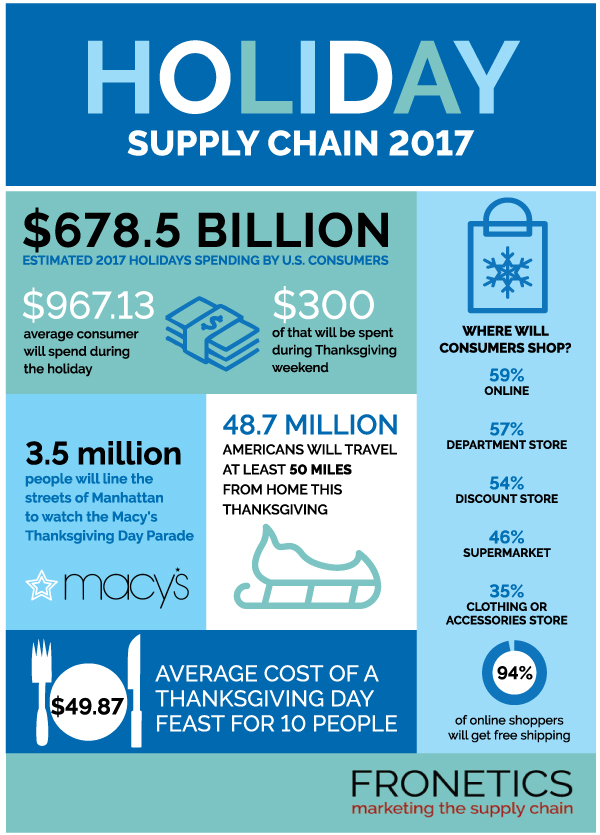
by Fronetics | Nov 20, 2017 | Blog, Content Marketing, Marketing, Social Media
Measuring brand awareness has been notoriously difficult. But these 4 metrics can help you evaluate if potential customers are encountering your content.
Companies work hard to get their products and services out into the world. It’s a key step in gaining exposure among potential customers and earning new business. This process is called brand awareness, the extent to which consumers are familiar with your brand.
Heightening the public’s knowledge of your business will generate leads, some of which will turn into sales. But this knowledge, or brand awareness, has proven difficult to measure. Do potential customers know your name, what you sell, and where to contact you? Creating ways to measure how recognizable your business is will show you what people think of your company, as well as where you should be focusing your time and money to help grow your exposure.
Here are 4 metrics to measure your brand awareness.
1. Social media reach
The larger your social media reach, the larger the potential audience. The reach of your social media content has a big impact on your brand awareness. Tracking engagements on each network will help you measure progress, build a greater following, and, ultimately, generate more site visits.
Use tools like Sharedcount, a free online tool that tracks the number of times a piece of content has been shared on the most popular social media sites — including Facebook, Twitter and LinkedIn — to easily keep track of your social reach.
2. Blog shares
Your blog content is the perfect fodder for organic brand awareness, especially if sharing your posts is easy. Create a share bar on your blog to allow your readers to quickly share your content through social media networks. Measure your number of shares to track your most popular blogs, monitor your growing brand awareness, and help guide the topics of your future blog posts.
3. Brand mentions
Are customers talking about your brand online? There’s a great deal of value in knowing what they’re saying. Monitoring brand mentions online can provide honest feedback and objective insight from current and potential customers.
There are several tools to help you track brand mentions online. Here at Fronetics, we prefer the ease of Google Alerts, which allows you to set up custom alerts when your brand is mentioned online. We also use Hootsuite, where you can track brand mentions, as well as keywords and phrases across all of your social media platforms.
4. Website traffic
Every visit to your website represents someone who is familiar with your brand. The question is: How are people finding your website? Think of web traffic in terms of sources:
- Organic traffic – users come across your website from search engines
- Direct traffic – users type in the name of your website or brand directly
- Referral traffic – users find your website from links on other websites
- Social traffic – users come across your website from social media content
- Paid search/social – users click on one of your paid digital ads, which drives them to your site
- Email traffic – users click through one of your marketing emails
You’ll want a healthy balance of each source to ensure your brand awareness campaign is diversified. Measure each of these metrics using a platform like Google Analytics or HubSpot. As each grows, you’ll know your brand awareness is growing alongside.
Use these 4 metrics to measure your brand awareness and track your progress as you work to grow your exposure. See where you’re having the most success and where you need improvement, and adjust your strategy accordingly.
Related posts:


by Fronetics | Nov 16, 2017 | Blog, Current Events, Supply Chain
With the 2017 holidays right around the corner, consumers are digging into their pockets and getting ready to increase sales, especially online.
The National Retail Federation is estimating that holiday sales will be up 3.6-4% from last year, totaling $678.5 billion in holiday spending. What’s more, consumers will be hitting the malls earlier than ever. More and more retailors are forgoing the traditional Thanksgiving dinner to open their stores during the holiday. Major retailers, including Target, Kohls, and Toys “R” Us, will open their doors at 5 p.m. on Thanksgiving Day.
“[Thanksgiving] was a strong weekend for retailers, but an even better weekend for consumers, who took advantage of some really incredible deals. In fact, over one third of shoppers said 100% of their purchases were on sale,” said NRF President and CEO Matthew Shay in 2016.
The NRF is estimating that the average consumer will spend $967.13 during the holiday season, almost $300 of which will be spent during Thanksgiving weekend.
Holiday spending can be broken up into three major categories:
- Gifts
- Items such as food, decorations, flowers and greeting cards
- Other non-gift items consumers buy for themselves and their families
For the first time in NRF’s survey history, online shopping has become the most popular shopping destination. In fact, 59% of consumers will head to their computers for holiday spending, where most will benefit from free shipping (94%).
“While many consumers are holding off until November or later to start their holiday shopping, retailers should be prepared for high traffic online and in stores come Thanksgiving weekend,” Prosper Insights Principal Analyst Pam Goodfellow says. “Although sales will remain an important factor for most consumers, many will lean on convenient locations and easy-to-use websites or mobile apps along with free shipping to complete their purchases.”
2017 holidays supply chain infographic

(Made with Canva)
From all of us at Fronetics, have a wonderful Thanksgiving!
Related posts:


by Fronetics | Nov 9, 2017 | Blog, Content Marketing, Customer Service, Marketing
Case studies have proven to be one of the most effective kinds of content in converting leads to buyers. Here are 4 strategies to getting customers to participate.
The 2017 Content Preferences Survey Report found that 78% of B2B buyers used vendor case studies as part of their purchasing decisions in the past 12 months. So why are customer testimonials and case studies so effective? Because buyers value the opinions of their peers and colleagues.
In fact, 89% of B2B marketers consider customer testimonials and case studies as the most effective kinds of content in converting buyers. It makes sense: User reviews offer an unbiased, credible experience regarding a company’s products or services. So potential customers do not have to rely exclusively on information the organization provides.
With stats like that, it is easy to see that case studies are compelling, but getting customers to participate in case studies can be very challenging. Here are 4 tips to help increase case study participation.
4 strategies to get customers involved in your case study
Create a formal process.
Start by getting support from your sales and marketing teams. With compelling stats about the success of case studies and customer testimonials, your internal teams will be jumping at the chance to help find participants. After all, these customers will help drive new sales.
Next you will need a formal submission process for sales and marketing team members to complete when they want to submit a customer’s name and information. You will also need a detailed document that explains to participants their level of involvement. People are busy! Keep case studies short and sweet so nominees are more likely to participate.
Be smart with your timing.
Case studies are most effective when you have happy, satisfied customers beaming about your products. Be smart with your timing and ask customers who just recently purchased your products or services. These customers are most likely excited about their recent purchase and may even go one step further in their reviews, offering tips and how-tos that will only add to the success of your case study.
Not sure if customers are happy with their recent purchase? Ask them! Send an email that asks if they’re satisfied. If their response shows excitement, ask if they’d be willing to participate.
Treat the case study as a mutual opportunity
Case studies can be beneficial to you and your participants, and should be treated as such. “Many customers already think doing business with you is a favor they did. You should not make them feel like they’re going to be doing you another favor by doing a case study,” writes Ayodeji Onibalusi for Effective Inbound Marketing.
Let customers see your case study as an opportunity for them. Explain the benefits, including publicity, they will achieve from participating. Post your case study to social media, link to your website, and send to existing and potential customers. A case study is something your participants can enjoy and won’t want to miss out on.
Find alternatives if customer polices prohibit case studies
Company policies that restrict or forbid some customers from participating in case studies are a big roadblock. Your company could have strict polices about customer testimonials, or customers might have restrictive company policies that limit their participation. These can be a challenge but don’t have to quash your opportunity to conduct successful case studies.
Get creative if you must! Conduct large group interviews and take samples of customer testimonials. Or use the average results from the interview to create an anonymous case study. If you’re still running into issues, simply ask customers for a one-sentence review that you can post without their information. These short reviews can still have a big impact on potential customers.
Case studies have proven they are worth their time and energy. Recommendations from actual customers are a powerful tool. Use these four strategies to conduct case studies that will help attract new customers and drive sales.
Related posts:


by Fronetics | Nov 8, 2017 | Blog, Data/Analytics
Marcus Tober, Searchmetrics founder, suggests three key ways to make your content more relevant and to improve your SEO visibility.
We talk a lot about the importance of content, like here and here. Content is everywhere, and companies are working hard to continually produce new content. But not all content is created equal.
Searchmetrics founder Marcus Tober discusses how data is changing the relevancy of content in his conference talk, Mastering the World of Deep Learning: How Big Data Is Making Content More Relevant in Search. As a pioneer in search-analytics software, Tober has watched search engines become more advanced at figuring out which web pages people will find relevant. Through years of research, Tober offers three lessons to make your content more relevant.
3 ways to make your content more relevant
Develop your content niche.
“Experts are not called upon because they are the smartest person in every room; they are called upon because they are the smartest person in a specific room.” John Gordon
Find your area of expertise, or niche, in your market and focus your content around this topic. Instead of writing broadly about various subjects relevant to your industry, your writers should tackle tough questions and introduce cutting-edge thought leadership in one key area that defines your company’s strength.
Marcus says, “This means that if you specialize in something and make it really good because you understand the user, you can have great search performance” compared with a huge site that produces content about everything.
Through this valuable and focused content, your company will stand out as a leader in your industry. Audiences will know how to categorize you, which sounds like a bad thing, but isn’t. When they have a specific question, they know to turn to you as a specific expert.
Get rid of ROT.
ROT (redundant, outdated, and trivial content) can sink your website. “Think about your house. We’re all a bit messy and a bit lazy. Likewise, I can imagine that you have a lot of content that maybe you should get rid of or should merge with something else you have,” says Tober.
Many companies keep older ROT content because of the volume of posts they want under their belts. Tober worked with a German company, Pflege.de (similar to care.com), which was afraid of cleaning out its ROT because of the internal links and the possibility of older posts still bringing in traffic.
On Tober’s recommendation, Pflege purged ROT and lost 95% of its content. 95%! The content the company was left with was more relevant and ranked higher with search engines. Pflege’s SEO visibility grew 240% within a few short months.
Update remaining content to address user intentions.
It’s not enough to just get rid of ROT. You also need to keep an eye on older content and make sure you continue to update as needed. “You have to make what’s left really good,” Marcus says.
What is meant by content that is “really good?” He means content that addresses people’s intentions – content that meets the information needs underlying the keywords and phrases they use.
Big data can help brands track their older content and make changes to address audience questions and relevancy. Tober’s company, Searchmetrics, is an example of a data service that helps companies take an in-depth look at older content and how it addresses user intentions. When brands update content to address specific wants and needs, it can boost online visibility and reveal new potential for older posts.
Improving your company’s SEO visibility can be easier to achieve than you think. Using these three steps, you can get ahead of search engines and place your brand in front of untapped audiences.
Related posts:


by Fronetics | Nov 7, 2017 | Blog, Content Marketing, Data/Analytics, Marketing, Social Media
Use these four steps to determine which social media KPIs your business should be tracking to ensure you’re meeting your content marketing goals.
Whenever we create content marketing strategies for clients, we always tailor them to align with their specific business goals. So, for example, if a client is interested in getting more leads, we implement a plan designed to convert website visitors into contacts. And, equally importantly, we make sure lead generation is a metric we are constantly measuring.
Social media management is usually an important part of a comprehensive content marketing program. So, too, do we create a social media strategy specifically tailored to a client’s content goals. And this begins with establishing the right social media KPIs (key performance indicators) for those goals.
I wish I could give you a list of metrics that would work for every business. But, of course, it doesn’t work that way. Depending on what you’re looking to accomplish with your marketing plan, you’ll want to strategize, execute, and measure progress accordingly.
To get you started, here are four steps to help you decide which social media KPIs to measure based on your specific content marketing goals.
4 steps to determining your social media KPIs
1) Understand the difference between metrics and KPIs.
According to social media strategist and author of Going Social and Getting to Like Jeremy Goldman, “It’s completely normal to get metrics and KPIs mixed up to some extent.” Metrics, he says, “are simply measurements quantified,” while KPIs are “metrics that you’ve determined are mission critical to your business.”
Why is this distinction important? While we can measure more than ever before, sometimes too many measurements lead to a loss of organizational focus. In fact, Goldman suggests defining relatively few KPIs in order to maintain focus. “The more KPIs your organization has defined, the less focused it likely is.”
2) Define your business’ specific social media marketing goals.
In order to figure out the most relevant performance indicators, you need to establish and document a set of goals for your social media presence. Once you’ve done that, you can select metrics that help you analyze your progress.
For example, if you’re trying to get as many views as possible on your company’s white paper, your best KPIs are probably going to be visits to the lead-gen form connected to the white paper, as well as the total number of white paper downloads.
3) Start with the basics.
What is your organization’s mission statement; what is its reason for being? “It may sound like a lofty place to start,” says Goldman, “but you can’t succeed without an understanding of the firm and where it’s looking to go.”
Once you’ve got a clear idea of your brand and your company’s mission, make sure you have an understanding of your role within the context of the larger organization. Having an understanding of these basics gives you tools to focus on what serves the whole.
4) Survey your metrics.
Take a close look at all the metrics available to you, making sure not to assume everything is important. By the same token, don’t discount a metric that might not seem at face value to be important — be as objective as possible.
Next, you can determine your KPIs. “Break down your list of metrics and pick a few you’re determined to work night and day to measure your success by,” suggests Goldman.
Related posts:









